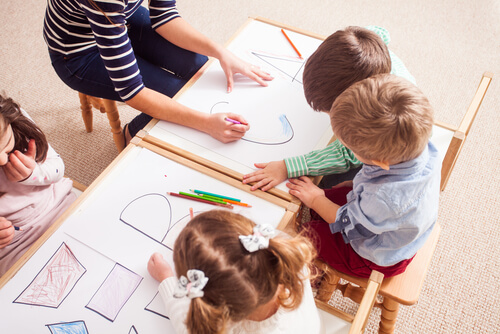Getting Ready to Read: Tips for Parents
Jan 10, 2022 Helping a child learn to read is one of the greatest joys in which a parent or teacher can participate. The delight a child experiences when sounding out a word for the first time is unmatched.
That mysterious activity that the “big people” can easily do – reading – is no longer a complete secret. Sounding out new words is a rite of passage as young children become readers.
Teaching Letter Sounds
There are many ways for parents and teachers to help their child prepare for this moment, and one of the most well-known is to teach letter sounds. Wonderful programs exist to bring letters to life, such as Letterland and Sounds in Motion, both of which utilize critical multisensory techniques. The Letterland program associates adorable characters, songs, and stories to each letter. Sounds in Motions, as the name suggests, assigns a particular movement to the learning of letter sounds. Many parents and teachers have also heard of the common sequence of naming the letter, associating a word, and then the sound (b, bat, /buh/) to help children acquire sounds. Regardless of the approach chosen, it is important to know the following:
It is the automatic application of the sound of the letter, not its name that is most critical when sounding out new words.
Utilizing these multisensory experiences, in which a child can “look, say, and do,” will cement the experience of learning new sounds. Another simple technique involves the use of commercially-available foam letters. A child can trace one of these letters while saying the sound, which will augment the memory of that sound. It’s critical that the child becomes fluent in the recalling of sounds in the beginning-to-read process.

Reviewing Sounds Daily
To emphasize the production of the letter sound, it is highly recommended that children eventually review letters without the associated learning “hooks,” such as the letter name or concrete object assigned to that letter. Parents and teachers can create a stack of index cards with letters for which the sounds are known. Review these sounds daily. Along the way, it may become apparent that a child still struggles with a certain sound. Go back and use the “hooks” to remind the child of the sound. (What sound is heard with the picture/object/motion that goes with the letter “b,” for example.)
Boost Your Child’s Speech Development!
Improve language & communication skills with fun learning!

Let’s apply this concept of sound knowledge and examine one of the first words that children typically learn to read: cat. When learning to sound out this word, the child must be able to easily recall the sounds of each letter, /c/ /a/ /t/, not the letter names, to blend the sounds into the word “cat.” An abundance of well-researched studies shows that the sounding out and blending process is required by beginning readers, and for most children, that foundational process needs to be taught. Parents and teachers can make the sounding out aspect easier with daily reviewing of letter sounds. When children can readily apply these sounds to unknown words, the possibility of their being able to then blend them to form that word is increased multifold. And learning how to sound out simple one-syllable words like “cat” places children in the future position of being able to read longer, unknown words, such as “caterpillar” or “category.”

Tips for Teaching Letter Sounds at Home
For those who may not have access to educational programs, teaching letter sounds at home using valuable multisensory activities is attainable for anyone with a little do-it-yourself initiative. On a piece of paper, draw a large bubble letter of the sound being taught. Inside that letter, the child will glue pictures or objects associated with that sound. While gluing, the child practices saying the letter sound. For example, when teaching the letter “m,” glue marshmallows into a bubble letter version of “m.” Say the sound /m/ while gluing. This activity works well for the letter “m” because marshmallows are yummy and the /m/ sound is associated with yumminess!
